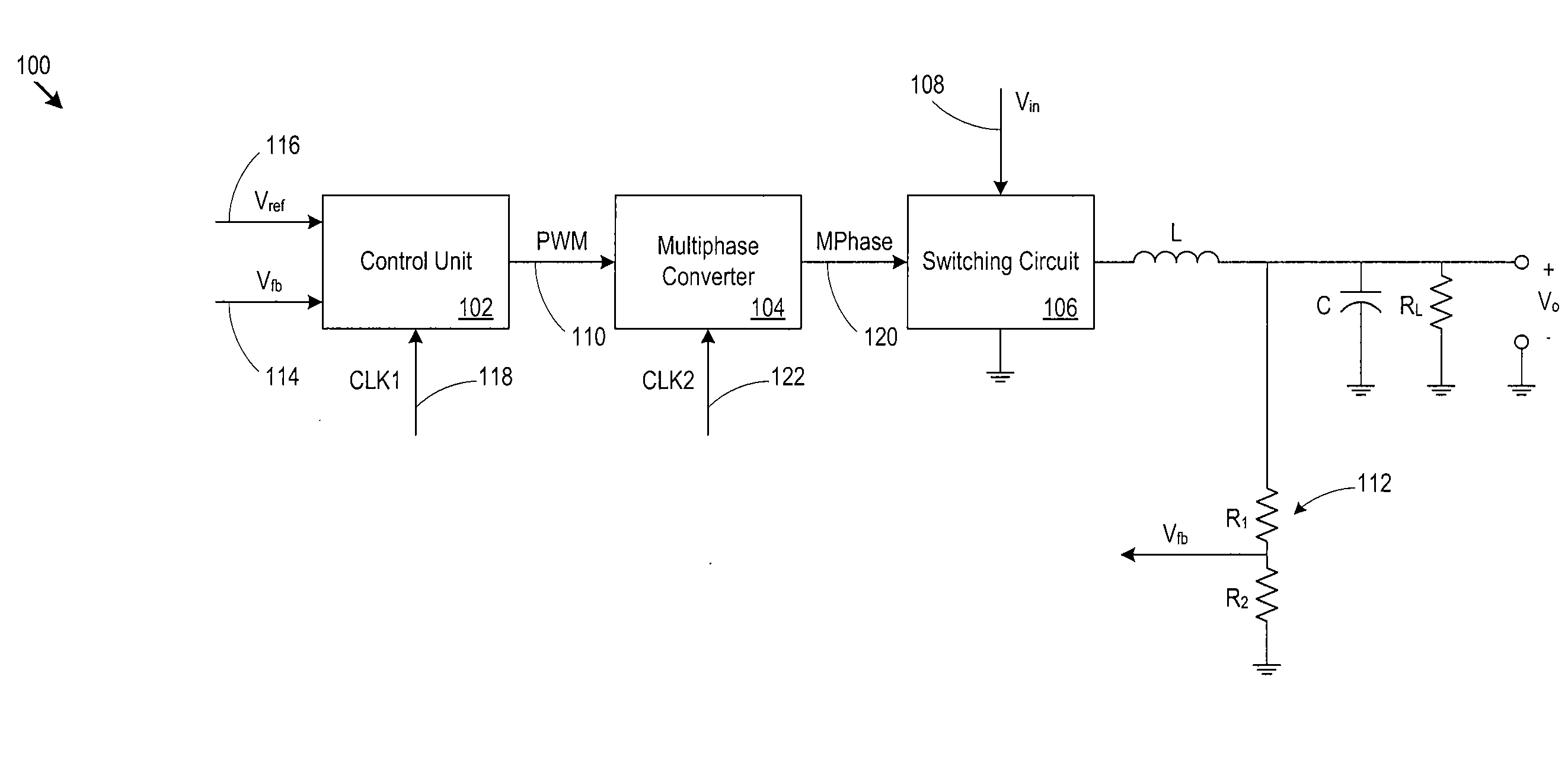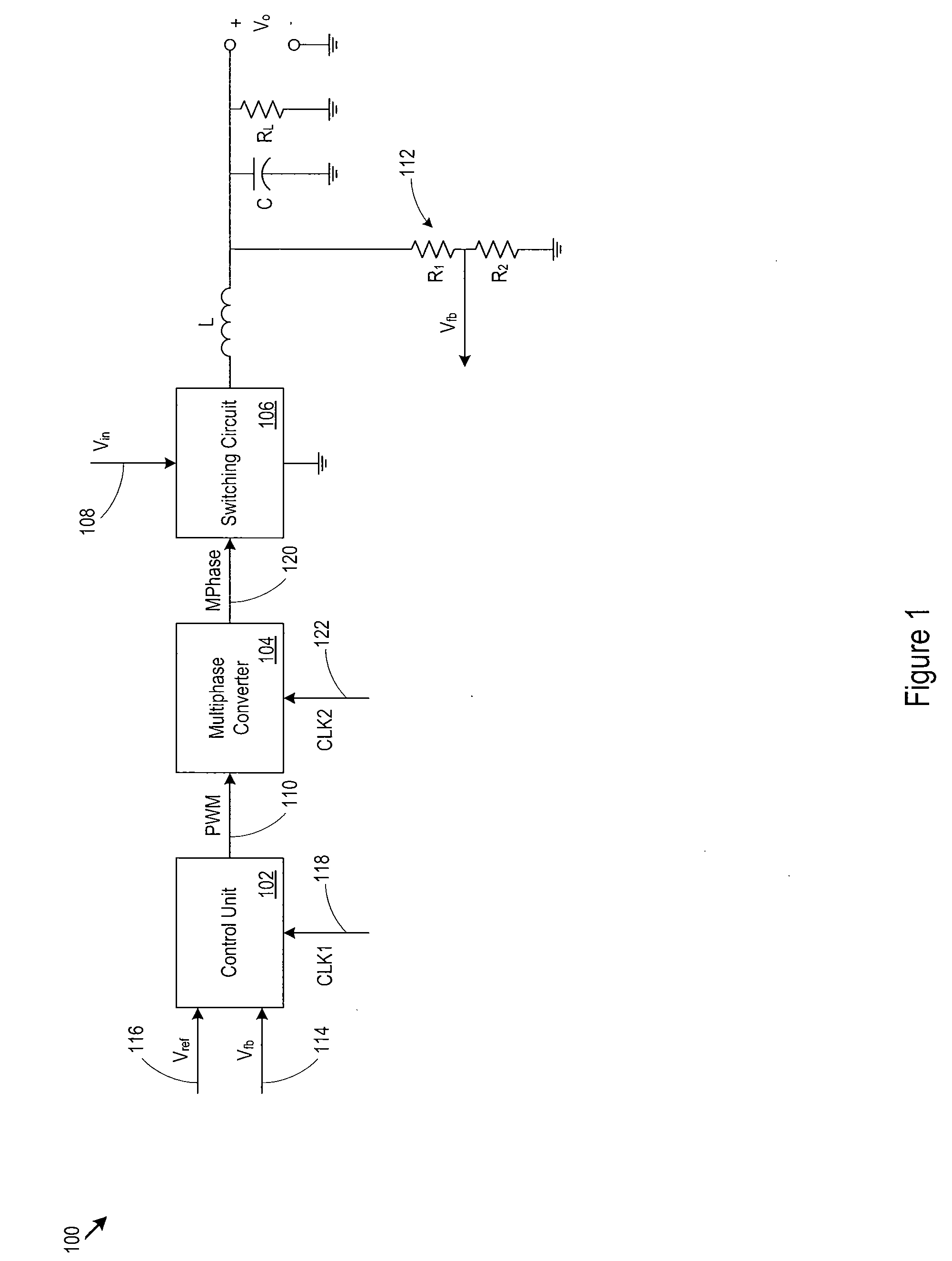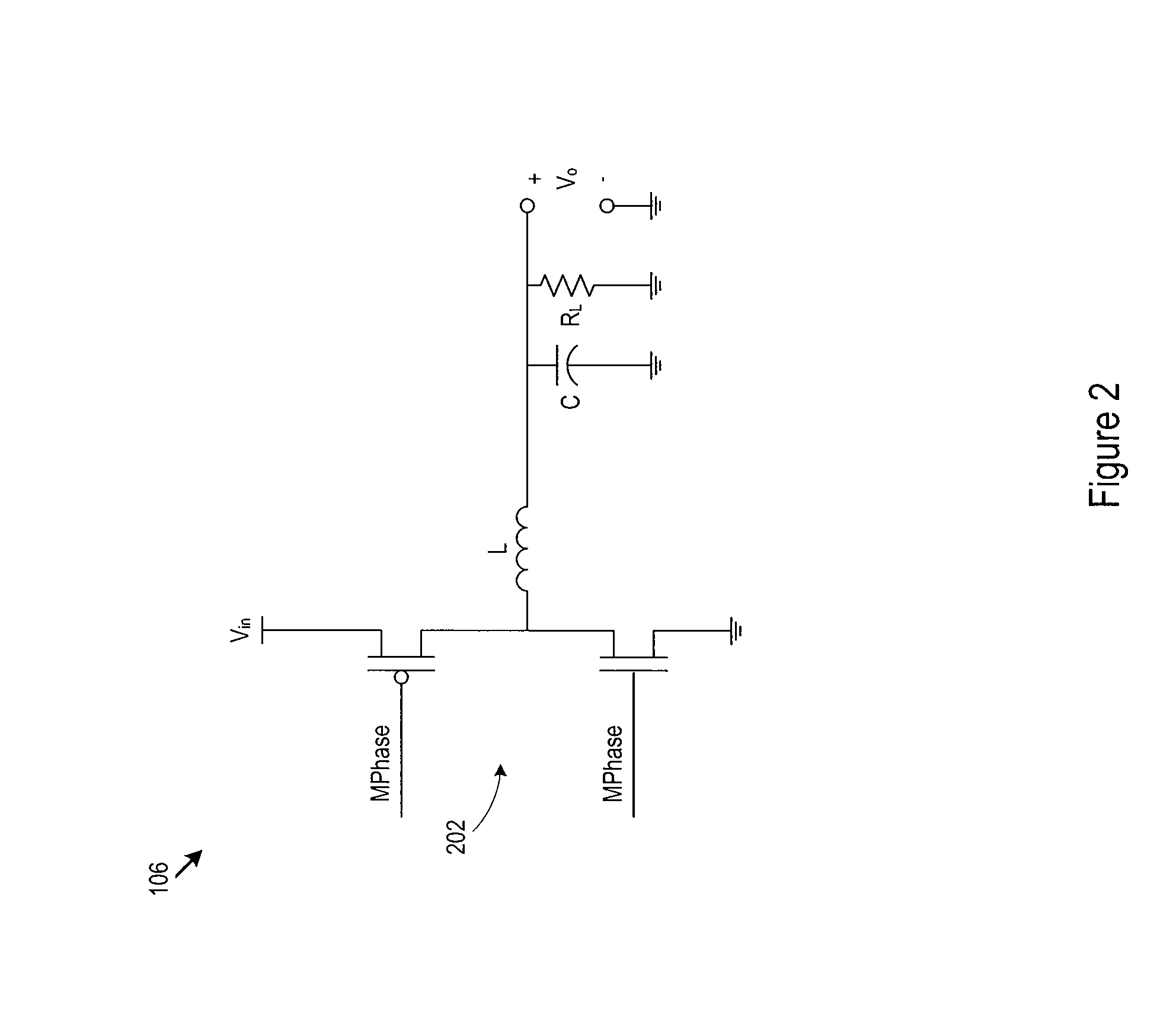Multiphase low lc buck regulator
a buck regulator, multi-phase technology, applied in the direction of power conversion systems, dc-dc conversion, instruments, etc., can solve the problems of significant power consumption, memory devices, and difficult to find space for large off-chip components, so as to reduce the size of inductor and capacitors, the effect of high efficiency
- Summary
- Abstract
- Description
- Claims
- Application Information
AI Technical Summary
Benefits of technology
Problems solved by technology
Method used
Image
Examples
Embodiment Construction
[0022]The discussion below makes reference to host devices and memory devices. A host device may be a wired or wireless device, may be portable or relatively stationary, and may run from DC (e.g., battery power), AC power, or another power source. A host device may be a consumer electronic device such as a personal computer, a mobile phone handset, a game device, a personal digital assistant (PDA), an email / text messaging device, a digital camera, a digital media / content player, a GPS navigation device, a satellite signal (e.g., television signal) receiver, or cable signal (e.g., television signal) receiver. In some cases, a host device accepts or interfaces to a memory device that includes the power converter. Examples of memory devices include memory cards, flash drives, and solid state disk drives. For example, a music / video player may accept a memory card that incorporates the power converter described below, or a personal computer may interface to a solid state disk drive that ...
PUM
 Login to View More
Login to View More Abstract
Description
Claims
Application Information
 Login to View More
Login to View More - R&D
- Intellectual Property
- Life Sciences
- Materials
- Tech Scout
- Unparalleled Data Quality
- Higher Quality Content
- 60% Fewer Hallucinations
Browse by: Latest US Patents, China's latest patents, Technical Efficacy Thesaurus, Application Domain, Technology Topic, Popular Technical Reports.
© 2025 PatSnap. All rights reserved.Legal|Privacy policy|Modern Slavery Act Transparency Statement|Sitemap|About US| Contact US: help@patsnap.com



